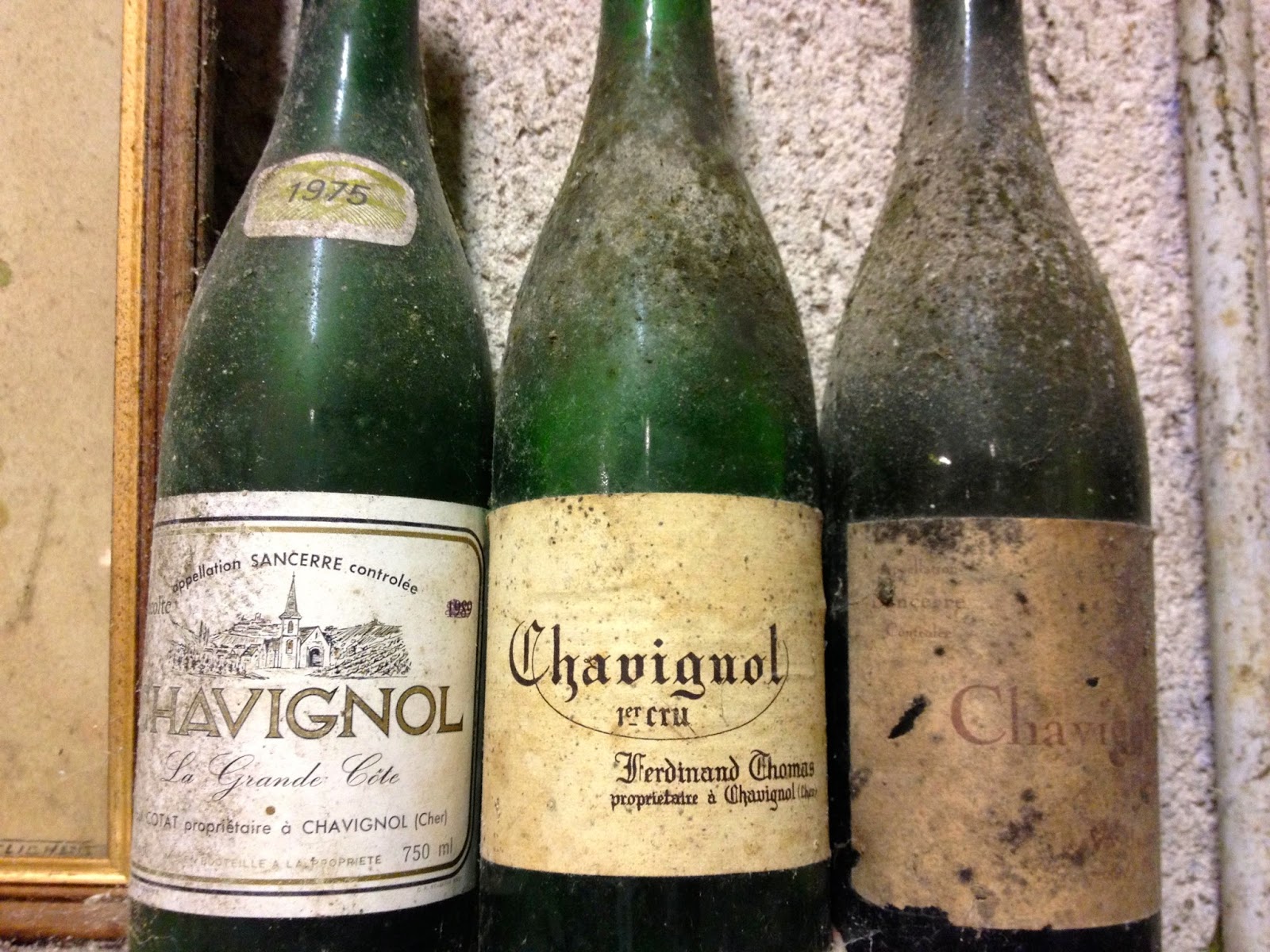The entrance to Sancerre legend François Cotat's tasting room must be one of the most sweetly vexing tableaux in the wine world. On a sunny Friday afternoon in July, the cascading geraniums around the hunched doorway look like a mariachi band. What are they celebrating?
Bein' closed. For good. Not having to deal with tasters and tourists except by choice. On the interior there's a photo of Cotat's mother and his father Paul on the day they sold their last available allocation. They're clasping hands in front of the CLOSED sign, beaming like chickens who killed a fox.
François seems to have inherited their reticence, their modesty. He doesn't like having his picture taken and possesses none of the bravado or showmanship of many grands vignerons. But one of the nice things about biking to meet vignerons is it tends to put them at ease. My friends and I decidedly do not resemble the packs of shades-wearing grey-marketeers who undoubtedly show up in shiny rental cars each week. When we arrived hours late in sweaty shorts the winemaker was totally cordial, having determined earlier that day over the phone that we were pleasant imbeciles who wanted little more from him than advice on where to purchase a rear tire.
Every article on François Cotat's wines must, according to the rules of the Sancerre appellation, contain a tedious summary of his family's confusing inheritance history. So here it goes: François' father Paul used to make wine with his brother Francis, at which time the same wine was bottled separately under labels bearing the winemakers' individual names. When Paul and Francis retired, Paul's share of vines went to his son François, and Francis' went to his son, Pascal Cotat, who moved his cellars to Sancerre and who continues to produce well-regarded wines, though not ones worth crossing town or jumping up and down for.
François Cotat has been producing wine under his own name since 1987. He fully took over his father's operation in 1998. His estate comprises 3ha of vines, largely spread between the appellation's most renowned vineyards: Les Monts Damnés, La Grante Côte, and Culs de Beaujeu. He uses only old barrels of about 10 years' age. Wines see 8 months in barrel, followed by periods in 600L and 300L tonneaux to clarify the wine. Contrary to popular belief, the estate is not organic, but Cotat "tries to be reasonable," and in his methods still ticks all the boxes in the language that most Anglo importers use to imply organic methods: natural yeast, hand-harvesting, minimal intervention in the cellar. In his own words, he doesn't believe in sulfur-free winemaking.
How do I feel about this, having just come from visiting sulfur-free winemaker Sebastien Riffault ? Not one way or the other, to be honest. Both winemakers have their recipes. François Cotat's Sancerres may strike a committed natural-o-phile as tight or overdetermined, but they're just built with a different ideal in mind. I'd liken the care Cotat takes with his wines to the care one would put into designing the bedroom of a spaceship aimed at a different galaxy. He wants them to be comfy, because they're going to take a long time to get where they're going.
Interestingly, Cotat is more openly agnostic than most winemakers about chaptalisation. He chaptalised in 2001, 2002, and 2004, though he hasn't needed to since then. The wines were denied the Sancerre appellation in 2002, and Cotat explains this was because the Sancerre appellation, while permitting chaptalisation, forbids chaptalised wines to finish above 13 alcohol.
We began by tasting 2012s. The young-vine "Caillottes," the strict, iodisé "Les Monts Damnés," the rounder, RS-dappled "Culs de Beaujeu." "La Grande Côte" was in Cotat's words 'more flattering on the nose,' its satin texture, pastry tones, and general pleasantness in the present-day constituting quite a distraction to how great it would invariably one day become.
 |
| Old bottles proudling proclaiming their Chavignol origins. |
Things got more interesting with a few older vintages Cotat had open. A "Monts Damnés" from 2005 showed leather, menthol, and anise - and it had been open 10 days. Most astounding was a "Grande Côte" from 1995, its deep perfumey nose and creamy resin tones contrasting with an energetic, refreshing structure. His non-commercialised partially botytised demi-sec called "Cuvée Paul"from 2006 showed voluptuous, ripe licorice fruit, and a faintly Indian-spiced complexity.
Throughout all this I kept babbling on about how great his rosé was, so Cotat indulged us by opening a bottle. Though he didn't seem to rate the wine too highly himself, he explained that he has only 0.5ha of Pinot Noir, and that 2012 had been a particularly lean year, with half the usual yield. It was of course lovely, though not yet as lovely as the bottle of 2007 I'd had over dinner at Le Pot d'Etain the month before, probably the greatest most pristine raspberry and mushroom inflected rosé I've ever tasted.
You can imagine how happy we were when he let us buy a few bottles of the current vintage. (As much as we could fit on the bikes.)
Domaine François Cotat
Le Bourg
18300 CHAVIGNOL
Tel: +33 (0)2 48 54 21 27
Related Links:
Sancerre Bike Trip: Sebastien Riffault, Sury-en-Vaux
A profile of François Cotat at North Berkeley Imports which incorrectly cites the estate at being "100% organic."
A good account of a 2008 visit to François Cotat at the indispensable Jim's Loire.
A splendid 2012 piece on François Cotat at The Wine Doctor.
Yonne Bike Trip - April 2013
Beaujolais Bike Trip - July 2012
Jura Bike Trip - April 2011







thanks for the link; and good catch on the organic reference; it has been corrected. best, north berkeley wine
ReplyDelete